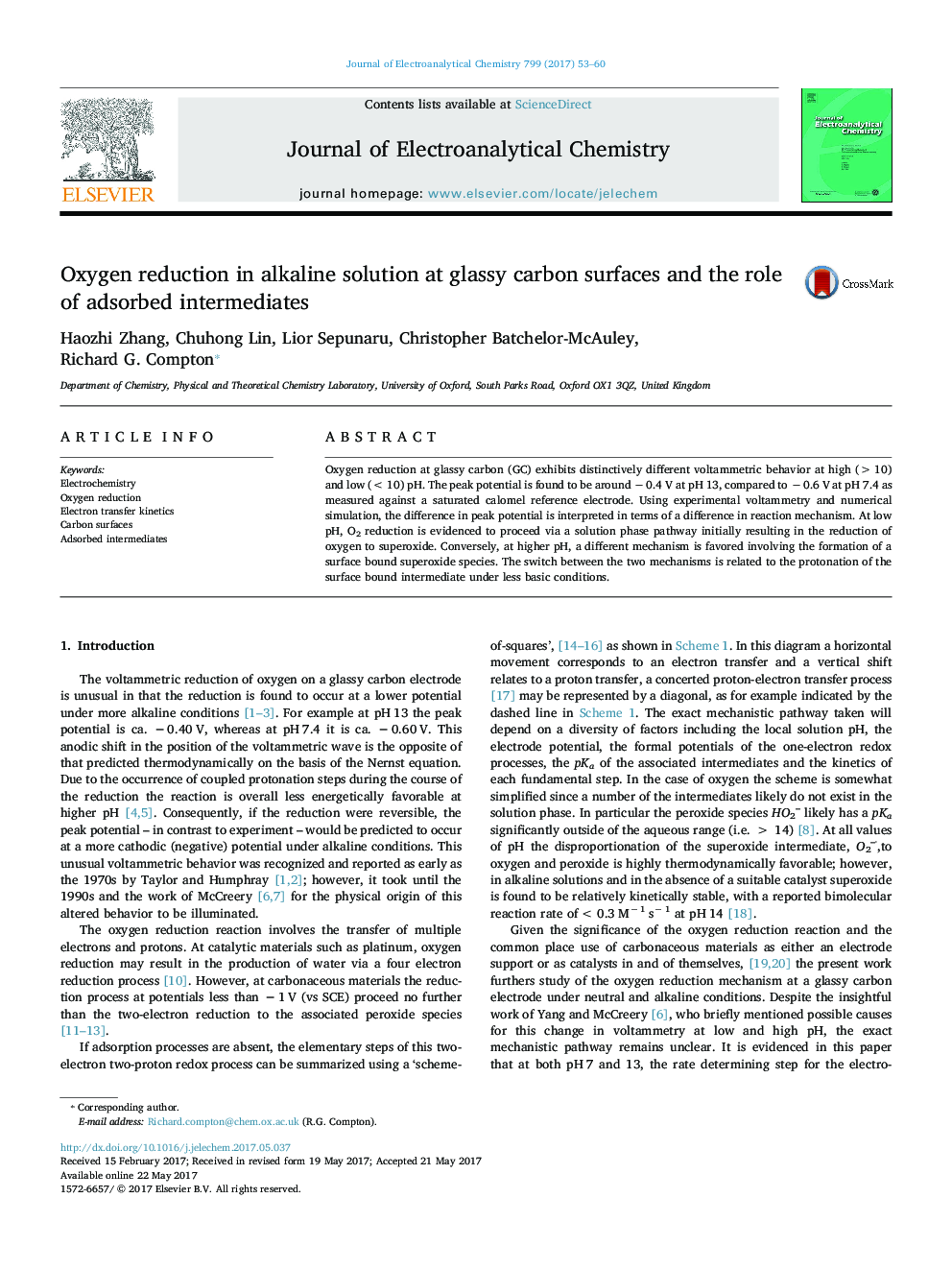| کد مقاله | کد نشریه | سال انتشار | مقاله انگلیسی | نسخه تمام متن |
|---|---|---|---|---|
| 4907722 | 1426576 | 2017 | 8 صفحه PDF | دانلود رایگان |
- Oxygen reduction at glassy carbon is faster at high pH.
- This shift is the opposite of that predicted by the Nernst equation.
- Combined voltammetric experimental and numerical simulation
- The mechanistic importance of surface adsorbed superoxide is evidenced.
Oxygen reduction at glassy carbon (GC) exhibits distinctively different voltammetric behavior at high (> 10) and low (< 10) pH. The peak potential is found to be around â 0.4 V at pH 13, compared to â 0.6 V at pH 7.4 as measured against a saturated calomel reference electrode. Using experimental voltammetry and numerical simulation, the difference in peak potential is interpreted in terms of a difference in reaction mechanism. At low pH, O2 reduction is evidenced to proceed via a solution phase pathway initially resulting in the reduction of oxygen to superoxide. Conversely, at higher pH, a different mechanism is favored involving the formation of a surface bound superoxide species. The switch between the two mechanisms is related to the protonation of the surface bound intermediate under less basic conditions.
Journal: Journal of Electroanalytical Chemistry - Volume 799, 15 August 2017, Pages 53-60
